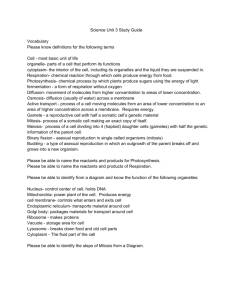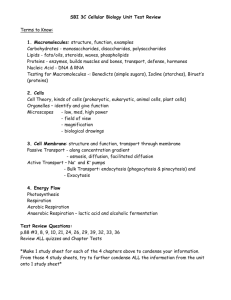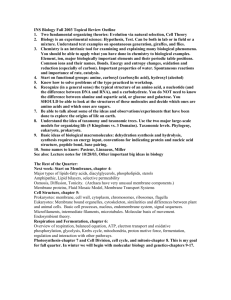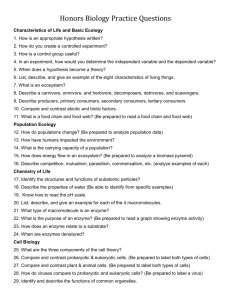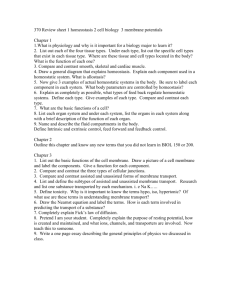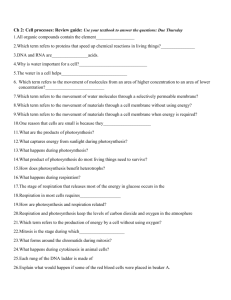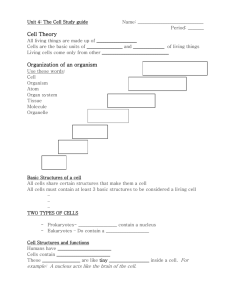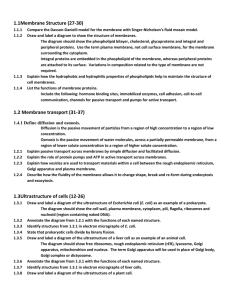Anatomy & Physiology I
advertisement
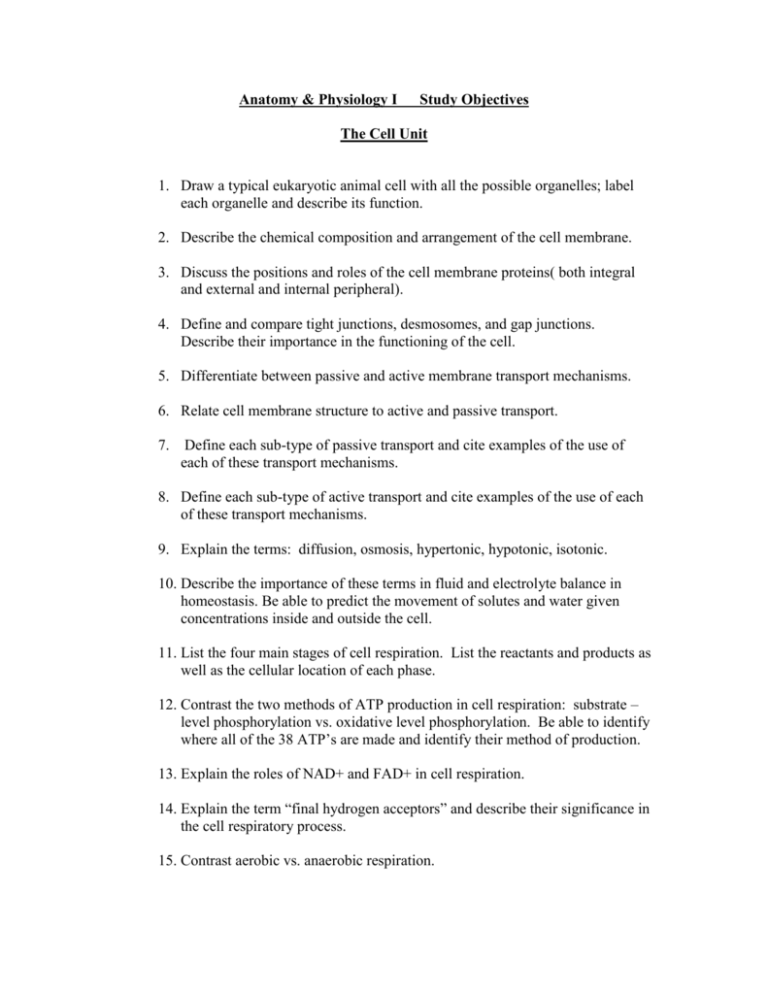
Anatomy & Physiology I Study Objectives The Cell Unit 1. Draw a typical eukaryotic animal cell with all the possible organelles; label each organelle and describe its function. 2. Describe the chemical composition and arrangement of the cell membrane. 3. Discuss the positions and roles of the cell membrane proteins( both integral and external and internal peripheral). 4. Define and compare tight junctions, desmosomes, and gap junctions. Describe their importance in the functioning of the cell. 5. Differentiate between passive and active membrane transport mechanisms. 6. Relate cell membrane structure to active and passive transport. 7. Define each sub-type of passive transport and cite examples of the use of each of these transport mechanisms. 8. Define each sub-type of active transport and cite examples of the use of each of these transport mechanisms. 9. Explain the terms: diffusion, osmosis, hypertonic, hypotonic, isotonic. 10. Describe the importance of these terms in fluid and electrolyte balance in homeostasis. Be able to predict the movement of solutes and water given concentrations inside and outside the cell. 11. List the four main stages of cell respiration. List the reactants and products as well as the cellular location of each phase. 12. Contrast the two methods of ATP production in cell respiration: substrate – level phosphorylation vs. oxidative level phosphorylation. Be able to identify where all of the 38 ATP’s are made and identify their method of production. 13. Explain the roles of NAD+ and FAD+ in cell respiration. 14. Explain the term “final hydrogen acceptors” and describe their significance in the cell respiratory process. 15. Contrast aerobic vs. anaerobic respiration. 16. Describe the process of protein synthesis(Central Dogma) by discussing the following reaction: DNA-(transcription)..RNA’s(tRNA, mRNA, rRNA) (translation) polypeptide chain protein (via coiling, folding, and transport in the golgi and ER). 17. Describe the role of each type of RNA in the process of protein synthesis and discuss the importance of complimentary base pairing to the process. 18. Draw and describe the phases of mitosis 19. Sketch a diagram of the cell cycle and explain it 20. State the significance of the process of mitosis in biology 21. Define cancer and compare and contrast benign and malignant tumors. Include the terms autonomous, anaplastic and metastatic in your discussion 22. Explain what is meant by the stage and grade of a tumor 23. Describe the ultimate cause of cancer and describe the contributing factors: radiation, chemicals, genetics, and viruses 24. Relate the terms oncogenes and protooncogenes to cancer 25. Describe the possible treatments for cancer. Explain why radiation and chemotherapy are effective 26. Define the term enzyme. Give examples of enzymes and explain how they are typically named 27. Explain the phrase “enzyme specificity” both structurally and functionally 28. Describe the role and importance of enzymes in metabolism and homeostasis
